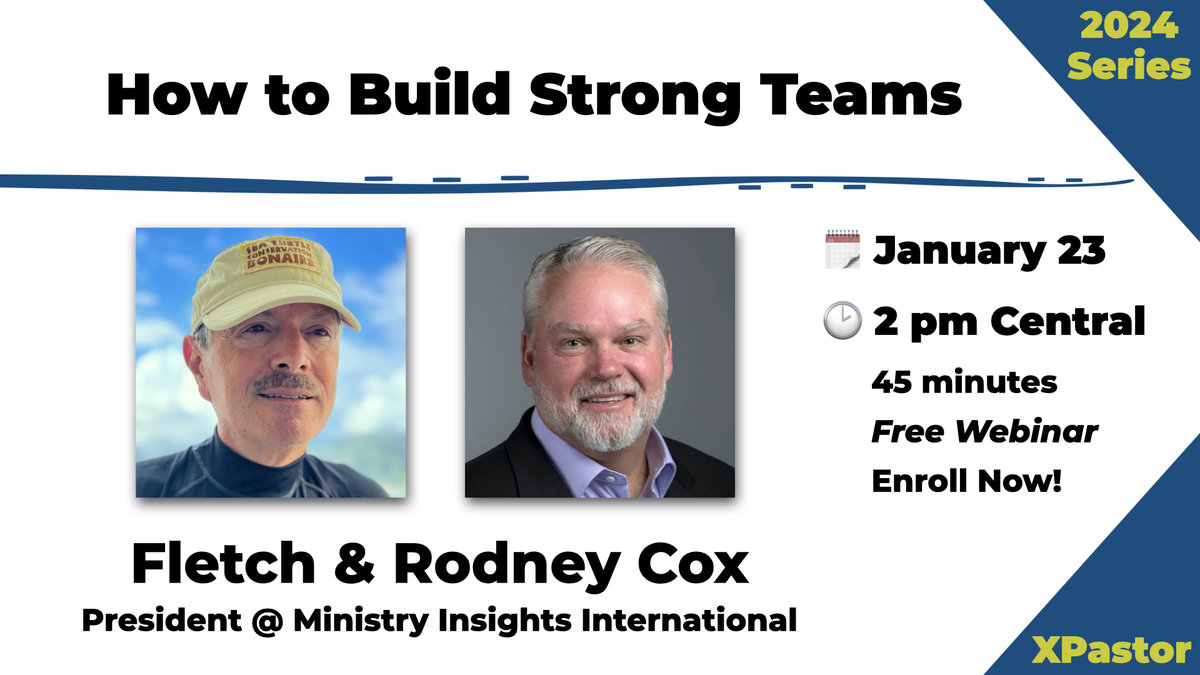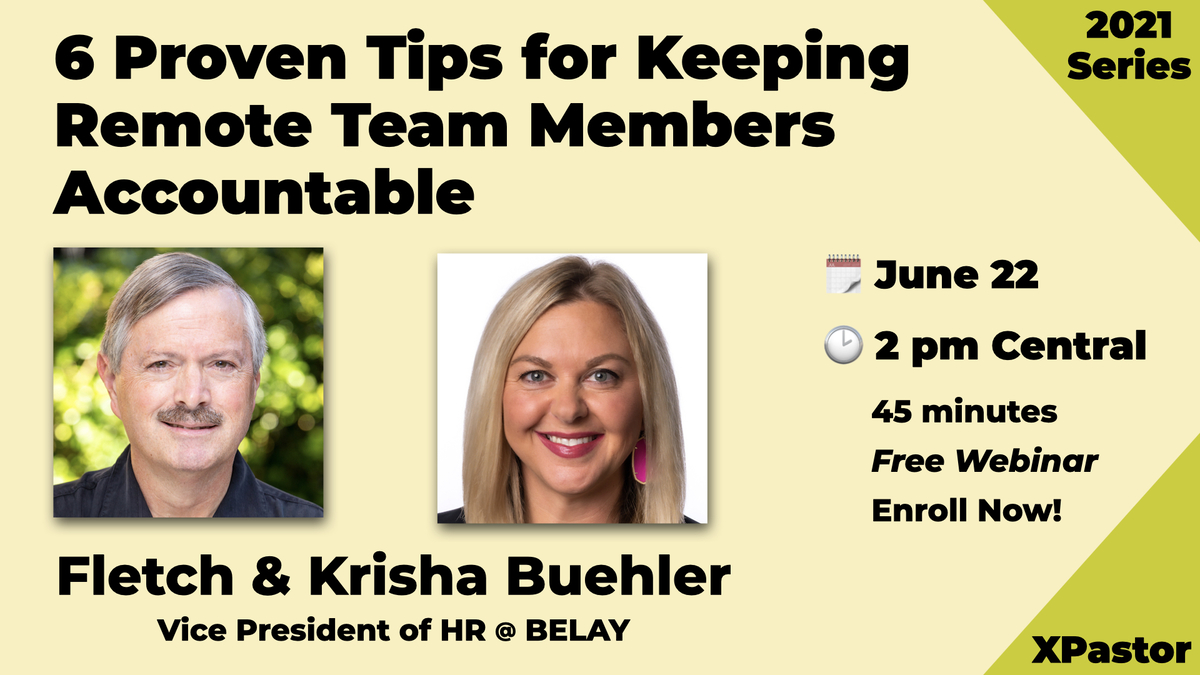 Up until now, I have for no good reason avoided reading Sticky Teams by Larry Osborne. Yes, I had heard it was excellent. Okay, more than one friend suggested it. But I guess I got stuck on the “sticky.” I’m just not a fan of the word. Sticky doesn’t have a really positive connotation to me. Gum on your shoe is sticky. A jar of grape jelly broken on the kitchen floor creates a sticky mess. Sticky is icky … enough said.
Up until now, I have for no good reason avoided reading Sticky Teams by Larry Osborne. Yes, I had heard it was excellent. Okay, more than one friend suggested it. But I guess I got stuck on the “sticky.” I’m just not a fan of the word. Sticky doesn’t have a really positive connotation to me. Gum on your shoe is sticky. A jar of grape jelly broken on the kitchen floor creates a sticky mess. Sticky is icky … enough said.
Except when it comes to church leadership! According to Larry, “sticky” turns out to be great when it comes to your teams. It’s what you want. It’s what you need. It’s the one thing you can’t afford to leave to chance. Diving deep into this book will ensure that you’ll never look at your relationships with your teams the same way again—especially your board.
What happened when I read this book is something that hasn’t happened to me in a really long time … perhaps fifteen years, dating back to my seminary days. I read the book once and was blown away. Then I read it again, taking handwritten notes (26 pages of them!) to ensure I was really downloading the material into my brain in the most effective way possible. Then I added the step of re-reading over my notes (and realized how atrocious my penmanship has become after years of non-use). Needless to say, this was the kind of book that said so many things I’ve thought over the years in ministry, but never said—and a great deal more that I should have thought as well as acted on!
Larry writes like the veteran pastor that he is. The principles in his book have all been tested in the lab of his church. The book is laid out in three parts: Part One is Landmines and Roadblocks, which discusses the organizational structures, polices, and traditions that can sabotage even the best teams. Part Two is Equipped for Ministry, which talks about getting everyone reading off the same page of music and heading in the same direction. Finally, in Part Three, Communication addresses what it takes to keep everyone on the same page.
Probably the single biggest idea in the book is to add a monthly “no business meeting” with your board. You’d think that adding an extra board meeting each month would put many of us pastors on suicide watch. However, this was indeed Larry’s breakthrough insight that changed everything for him, and he goes into great (and necessary) detail as to why this is so important—and how to do it.
In my estimation, this is one of the best books I’ve come across since Simple Church. If you are an XP or SP, this is an essential read. It might just save your ministry!
Additional material
At the risk of breaching typical book review protocol, I will add onto this review the 2-5 top insights I took from each chapter. (Disclaimer: These notes are quotes or paraphrases from each chapter, unless it’s obvious I’m commenting personally on them. The grammar admittedly isn’t as tight. The purpose of this is to have a better electronic record for myself, as well as where to find each topic quickly for when I later teach on them.)
Chapter 1—The Unity Factor: The One Thing that Can’t be Left to Chance!
- Disunity is the default status for teams everywhere. Don’t be surprised by this.
- Larry spent the first two and a half years developing/unifying his board, which was his highest priority. It paid off big time. You aren’t going to be effective “out there” until you solve your conflict “in here.”
- Unity for Larry is defined in three areas: Doctrinal (decide what you’ll fight about and what you won’t), respect and friendship (take a separate monthly “no business” time each month to build this, and philosophical (agreement about priorities and methods of ministry ahead of time).
Chapter 2—Why Boards Go Bad
- Boards typically meet in the wrong place. Meet instead in a home, where people naturally treat others much better.
- Boards typically ignore relationships. Instead, have regular retreats and do a once a month “no business meeting.” This is for the purpose of team building, training in practical ministry, and prayer … and pays huge dividends!
- Boards typically have constant turnover. This is no good. Larry’s church does one-year terms that can be renewed indefinitely.
- Boards typically have too many members. Larry recommends no more than 12 for a big church (and one can assume less for medium and smaller-sized churches).
Chapter 3—Guarding the Gate
- No matter what else you do, keep contentious and negative people off your board. It doesn’t matter how long they’ve been there, how much they’ve served, and how much of the Bible they know. These people will kill you quicker than anything.
- Have the guts to speak up on the front end to keep them off. Be ready to pay the sometimes heavy price to keep them off, but it’s worth it.
- Tenure and a willing heart are not enough. Neither is being spiritual. Board members must be in alignment with your ministry philosophy (businesses and non-profits would NEVER put people on their board who are misaligned on philosophy). People with poor people skills should never be on the board. Also, people who are pit bulls will bite others. It’s who they are and what they do. Don’t be surprised when they do!
- He prefers to hire staff from inside if possible. They are a known quantity and already are on board with the vision. Occasionally they hire from the outside and only have 70% great fits.
- Final questions to ask: “How will this person fit relationally on the team” and “How will this person fit with the needs of the team organizationally?”
Chapter 4—What Game are We Playing?
- This is the famous chapter where Larry compares staff sizes to track (solo pastor), golf (smaller church 2-4), basketball (5-15) and football (very large staffs).
- The point is that the way you handle your staff and communicate has to change. It’s also true that some staffs are suited better for each kind of sport (size of church) by nature.
Chapter 5—Six Things Every Leadership Team Needs to Know
- Ignore your weaknesses and focus on what you do really well. It’s who God made you to be and maximizes your effectiveness. Focusing on your weaknesses wastes a lot of time for a small return.
- Surveys are a waste of time. They only reveal what people think you want to hear, and are biased against innovation. They only use them to ask, “Who wants to help launch this idea?”
- Get permission, not buy in. Permission costs less personal chips, gets things up and running faster, and allows you to scrap bad ideas easier. Permission means, “I’ll let you try.” Buy-in means, “I’ll back your play.” When you want the board’s “buy in,” you are risking a lot and make failures a big deal. It’s also so much harder to get. Get permission and count only the “yes” votes!
- Let squeaky wheels squeak. The more you address these people, the more you have, and the louder they get. No matter what, don’t let these people on the board!
- Let dying programs die. If you never prune ministries, you never have energy, time, and money to create the future. Ask: Why are we doing this and what are the results?
- Plan in pencil. The budget should be a guideline, not a straightjacket. Let everyone know this constantly and up front.
Chapter 6—Clarifying the Pastor’s Role
- There needs to be full agreement on the board and staff of a pastor’s role or else dysfunction and conflict inevitably breaks out.
- Pastors who aren’t the main leader (or who don’t or can’t lead) will rarely see lasting growth in their church. It has to be the pastor who is the main leader.
- Churches have to answer three things before they let the pastor lead: Is the pastor as committed to this church as I am? Who is best qualified to lead, and why? How can we prevent a strong leader from becoming a dictator?
- Pastors need two things that can’t be microwaved: Time and commitment.
- Can a strong pastor be controlled? Follow these three things: Present first drafts, not final proposals. Keep no secrets from the board. Follow the board’s advice.
Chapter 7—Clarifying Board and Staff Roles
- Always clarify staff and board roles before someone joins the team … and make sure everyone knows that changes in these roles over time will be unavoidable.
- Board’s role changes with the size of the church: Doing – Approving – Reviewing – Setting Direction and Boundaries.
- Changes in a board’s role should be made when there is a marked increase in conflict and frustration while making decisions and/or when meetings drag on forever.
- Boards that refuse to change how they operate forever cap the growth of their church.
Chapter 8—Making Room at the Top
- Let young eagles fly by “platforming” them with titles and roles that usually only senior leaders get to do. If not, you will suffer the inevitable 20-year cycle of growth and decline.
- Make sure a couple of young eagles are not just “in the loop” but actually “in the meeting.”
- You have to make room at the head leadership table (others won’t like it, likely they’ll be hurt and leave).
- Zero based retreats with 6-8 creative leaders (not just all senior leaders), half under 40, ask the following: What would we do differently if we were starting all over again? What are we doing now that we wouldn’t do? What are we not doing now that we would do? On a scale of 1-10, how effective is each ministry and program? Each staff member?
Chapter 9—Equipped to Lead
- Lobbying and training are different. When info is presented too close to a decision making process, most people will view it as a lobbying effort and resist.
- Most staff and boards are separated by a wide degree of training and experience.
- This is why you must have that “no business” meeting once a month. Use it to train your board up to, over time, sing from the same songbook.
- Leadership principles need repeated over and over. The process is to expose them, get them familiar, and finally, for them to understand it. This happens by the “drip method” of a little at a time.
Chapter 10—Board Alignment
- The agenda for the “no business meeting” is threefold: team building, training, and prayer. There can be no votes or decisions. No minutes are taken. They do it on Saturday mornings once a month.
- Breakfast is the team building part. They renew their friendships and catch up. This is more significant than it seems. Friends treat each other very differently than acquaintances when they disagree.
- Training is a 60-90 minute session. The curriculum is less important than the process, as there’s plenty of good material out there. Studying a book, a chapter at a time, is one way.
- Prayer is for individuals and by name, not generic. They pray conversationally and no more than one item at a time, to avoid the “prayer warriors” from dominating.
Chapter 11—Staff Alignment
- Alignment can be created by “plumb lines” which are organizational proverbs and pithy sayings that describe clearly and concisely what we value when making decisions.
- Plumb lines don’t represent the only way to do ministry; they do describe how you do ministry at your church. They are actually more important in some ways than the mission statement!
Chapter 12—Congregational Alignment
- Have a clear and very simple Mission Statement, and work it in everywhere.
- Have a front-loaded “Pastor’s Class” which is about who you are, what you do, and why you do it. It shouldn’t be connected to membership. You’ll avoid so many conflicts later!
- Have a “drip method” of preaching vision. Once a year is not enough, and you miss so many people. Work vision in every week!
- Have sermon-based small groups. It keeps everyone on the same page.
- Have short and sweet congregational meetings. Three weeks to ask questions, and then when you vote, there’s no discussion.
Chapter 13—Change Diplomacy
- Old farmer’s advice, “Go slow son. Churches are a lot like horses. They don’t like to be startled or surprised. It causes deviant behavior.” Four step process that reduces deviant behavior:
- Test the waters. Don’t present anything formal, just ask some key people and note their reaction. It tells what parts of the idea will receive the strongest resistance and who will be the strongest resisters.
- Listen and respond to resisters. See it as an opportunity to turn a good idea into a great idea. These people will unintentionally shine and polish your idea by pointing out all the weaknesses.
- Sell your idea to individuals before groups. Line up strong supporters ahead of time. Neglecting this is a big mistake. Don’t put people in the awkward position of going public with their initial reactions. Once they go public with their opinion, it’s hard to turn back.
- Lead boldly. Questions to ask: Is it God’s will? What price will we have to pay? Who (not if) will we lose? You’ll lose people in each major decision. Be sure it’s the people who are holding onto the past. They are saved and can easily find another church in your community.
Chapter 14—Setting Salaries
- High salaries don’t increase morale, they just increase expectations. Low salaries, on the other hand, kill morale. Pay your people one dollar more than their peers; after that, there’s no upside.
- Make sure you’re comparing apples to apples. Completely separate salaries and benefits when discussing them.
- Establish replacement value for losing a good staff member and pay them slightly more.
- For high performers, slap on some “golden handcuffs” by paying them more than they would get elsewhere (so they aren’t tempted).
- Decide what you’ll do each year in advance if more money comes in than expected. A portion will never go to staff if you don’t.
Chapter 15—Talking About Money
- Larry admits it’s controversial, and that he used to hold the opposite opinion, but he thinks you should know who are your main givers. It will really keep the board accountable and allow you to not be bluffed by people removing their giving who really don’t give. Non-givers lose credibility.
- Staff should give too!
- Beware of one-time gifts messing up your budgeting for next year. Also, know if a big giver leaves or moves. Knowing who gives will help with this.
Chapter 16—When Things Go Wrong
- In regard to moral failure, there will always be two camps: Family and Justice. Family wants to be overly generous and Justice wants to give them nothing. Establish ahead of time what you will do with staff and board members in the case of moral failure or you’ll lose more staff and board members fighting about it when it happens.
- In the case of financial crisis: Be very straightforward. Explain what happened, where you are, and how you plan to fix it. Take full responsibility. The congregation will generally respond well and will want to know: Have we gotten the whole truth and can we trust our leaders to keep telling us the truth?
- In a crisis, people want facts, not fluff. Don’t dance around it.
- Not everyone will agree when you let staff go. Be generous, which does three things: Treats others as we want to be treated, pulls the rug out from defenders of the former staff member, and acknowledges the church’s culpability in the situation. Don’t pump sunshine about a released staff member … you’ll lose credibility with the people that know better.











